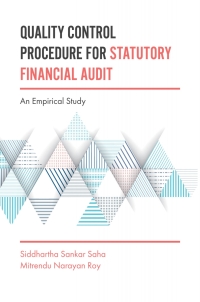Question
In accounting for investments in debt securities that are classified as trading (P&L) securities, a. a discount is reported separately. b. a premium is reported
In accounting for investments in debt securities that are classified as trading (P&L) securities,
a. a discount is reported separately.
b. a premium is reported separately.
c. any discount or premium is not amortized.
d. none of these.
Option 5
Goods in transit which are shipped f.o.b. shipping point should be
a. included in the inventory of the seller.
b. included in the inventory of the buyer.
c. included in the inventory of the shipping company.
d. none of these
Belle Co. received merchandise on consignment. As of March 31, Belle had recorded the transaction as a purchase and included the goods in inventory. The effect of this on its financial statements for March 31 would be
a. no effect.
b. net income was correct and current assets and current liabilities were overstated.
c. net income, current assets, and current liabilities were overstated.
d. net income and current liabilities were overstated.
Option 5
In computing cost ratio, the conservative/conventional retail method should
a. Include markup and markdown
b. Exclude markup and markdown
c. Include markup but not markdown
d. Exclude markup but not markdown
The accountant for the Orion Sales Company is preparing the income statement for 2020 and the balance sheet at December 31, 2020. Orion uses the periodic inventory system. The January 1, 2020 merchandise inventory balance will appear
a. only as an asset on the balance sheet.
b. only in the cost of goods sold section of the income statement.
c. as a deduction in the cost of goods sold section of the income statement and as a current asset on the balance sheet.
d. as an addition in the cost of goods sold section of the income statement and as a current asset on the balance sheet.
Costs which are inventoriable include all of the following except
a. costs that are directly connected with the bringing of goods to the place of business of the buyer.
b. costs that are directly connected with the converting of goods to a salable condition.
c. buying costs of a purchasing department.
d. selling costs of a sales department.
Option 5
Inventories should be measured at:
a. Cost or net realizable value, whichever is higher
b. Cost or fair value less cost to sell, whichever is lower
c. Lower of cost or net realizable value, item by item
d. Lower of cost or net realizable value, by total
Option 5
Goods on consignment are
a. included in the consignee's inventory.
b. recorded in a Consignment Out account which is an inventory account.
c. recorded in a Consignment In account which is an inventory account.
d. all of these
Byner Corporation accounts for its investment in the common stock of Yount Company under the equity method. Byner Corporation should ordinarily record a cash dividend received from Yount as
a. a reduction of the carrying value of the investment.
b. additional paid-in capital.
c. an addition to the carrying value of the investment.
d. dividend income.
Valuation of inventories requires the determination of all of the following except
a. the costs to be included in inventory.
b. the physical goods to be included in inventory.
c. the cost of goods held on consignment from other companies.
d. the cost flow assumption to be adopted.
The failure to record a purchase of merchandise on account even though the goods are properly included in the physical inventory results in
a. an overstatement of assets and net income.
b. an understatement of assets and net income.
c. an understatement of cost of goods sold and liabilities and an overstatement of assets.
d. an understatement of liabilities and an overstatement of owners' equity.
Under the equity method of accounting for investments, an investor recognizes its share of the earnings in the period in which the
a. investor sells the investment.
b. investee declares a dividend.
c. investee pays a dividend.
d. earnings are reported by the investee in its financial statements.
When a company holds between 20% and 50% of the outstanding stock of an investee, which of the following statements applies?
a. The investor should always use the equity method to account for its investment.
b. The investor should use the equity method to account for its investment unless circum-stances indicate that it is unable to exercise "significant influence" over the investee.
c. The investor must use the fair value method unless it can clearly demonstrate the ability to exercise "significant influence" over the investee.
d. The investor should always use the fair value method to account for its investment.
Option 5
Step by Step Solution
There are 3 Steps involved in it
Step: 1

Get Instant Access to Expert-Tailored Solutions
See step-by-step solutions with expert insights and AI powered tools for academic success
Step: 2

Step: 3

Ace Your Homework with AI
Get the answers you need in no time with our AI-driven, step-by-step assistance
Get Started


